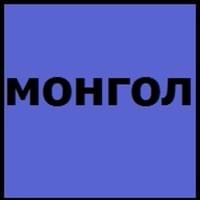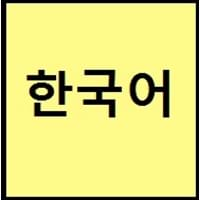Countries
China, Mongolia
China, Jilin Province, North Korea, South Korea, Yanbian
National Language
China, Mongolia
North Korea, South Korea
Second Language
Not spoken in any of the countries
Not spoken in any of the countries
Speaking Continents
Asia
Asia
Minority Language
Not spoken in any of the countries
Japan, People's Republic of China, Russia, United States of America
Regulated By
Council for Language and Literature Work, State Language Council (Mongolia)
The National Institute of the Korean Language
Interesting Facts
- Mongolian was first written using Phagspa script in late 13th century.
- There is no connection between Mongolian, Japanese and Korean, but still in terms of grammar and sentence structure they are very similar.
- Korean has borrowed words from English and Chinese.
- Korean has two counting systems. First, is based on Chinese characters and numbers are similar to Chinese numbers, and second counting system is from words unique to Korea.
Similar To
Turkish Language
Chinese and Japanese languages
Derived From
Not Available
Not Available
Alphabets in
Mongolian-Alphabets.jpg#200
Korean-Alphabets.jpg#200
Scripts
Mongolian alphabets: Traditional Mongolian script
Hangul
Writing Direction
Not Available
Left-To-Right, Horizontal, Top-To-Bottom
Hello
Сайн уу (Sain uu)
안녕하세요. (annyeonghaseyo.)
Thank You
та бүхэнд баярлалаа (ta bükhend bayarlalaa)
감사합니다 (gamsahabnida)
How Are You?
Юу байна? (Yuu baina?)
어떻게 지내세요? (eotteohge jinaeseyo?)
Good Night
Сайн шөнийн (Sain shöniin)
안녕히 주무세요 (annyeonghi jumuseyo)
Good Evening
Сайн үдэш (Sain üdesh)
안녕하세요 (annyeonghaseyo.)
Good Afternoon
Сайн Үдээс хойш (Sain Üdees khoish)
안녕하십니까 (annyeong hashimnikka)
Good Morning
Өглөөний мэнд (Öglöönii mend)
안녕히 주무셨어요 (An-yŏng-hi ju-mu-shŏ-ssŏ-yo)
Please
Хэрэв (Kherev)
하십시오 (hasibsio)
Sorry
Уучлаарай (Uuchlaarai)
죄송합니다 (joesonghabnida)
Bye
Баяртай (Bayartai)
안녕 (annyeong)
I Love You
Би чамд хайртай (Bi chamd khairtai)
당신을 사랑합니다 (dangsin-eul salanghabnida)
Excuse Me
Өршөөгөөрэй (Örshöögöörei)
실례합니다 (sillyehabnida)
Dialect 1
Khalkha Mongolian
Jeju
Where They Speak
Mongolia
South Korea
How Many People Speak
Not Available
Dialect 2
Ordos Mongolian
Gyeongsang
Where They Speak
Mongolia
South Korea
Dialect 3
Khorchin Mongolian
Hamgyŏng
Where They Speak
Mongolia
China, North Korea
Speaking Population
Not Available
Native Name
монгол (mongol) монгол хэл (mongol hêl)
한국어 (조선말)
Alternative Names
Not Available
Hanguk Mal, Hanguk Uh
French Name
mongol
coréen
German Name
Mongolisch
Koreanisch
Pronunciation
/mɔŋɢɔ̆ɮ xiɮ/
Not Available
Ethnicity
Not Available
Koreans
Origin
1224-1225
Before 1st century
Language Family
Mongolic family
Koreanic Family
Subgroup
Mongolian
Not Available
Branch
Not Available
Not Available
Early Forms
Middle Mongolian, Classical Mongolian, Mongolian
Old Korean, Middle Korean and Korean
Standard Forms
Khalkha, Southern Mongolian
Pluricentric Standard Korean, South Korean standard and North Korean standard
Language Position
Not Available
Signed Forms
Mongolian Sign Language
Korean Sign Language
Scope
Macrolanguage
Individual
ISO 639 6
Not Available
Not Available
Glottocode
mong1331
kore1280
Linguasphere
part of 44-BAA-b
45-AAA
Language Type
Living
Living
Language Linguistic Typology
Subject-Object-Verb
Subject-Object-Verb
Language Morphological Typology
Not Available
Agglutinative
Mongolian and Korean Greetings
People around the world use different languages to interact with each other. Even if we cannot communicate fluently in any language, it will always be beneficial to know about some of the common greetings or phrases from that language. This is where Mongolian and Korean greetings helps you to understand basic phrases in Mongolian and Korean language. Mongolian word for "Hello" is Сайн уу (Sain uu) or Korean word for "Thank You" is 감사합니다 (gamsahabnida). Find more of such common Mongolian Greetings and Korean Greetings. These greetings will help you to be more confident when conversing with natives that speak these languages.
Mongolian vs Korean Difficulty
The Mongolian vs Korean difficulty level basically depends on the number of Mongolian Alphabets and Korean Alphabets. Also the number of vowels and consonants in the language plays an important role in deciding the difficulty level of that language. The important points to be considered when we compare Mongolian and Korean are the origin, speaking countries, language family, different greetings, speaking population of these languages. Want to know in Mongolian and Korean, which language is harder to learn? Time required to learn Mongolian is 44 weeks while to learn Korean time required is 88 weeks.





